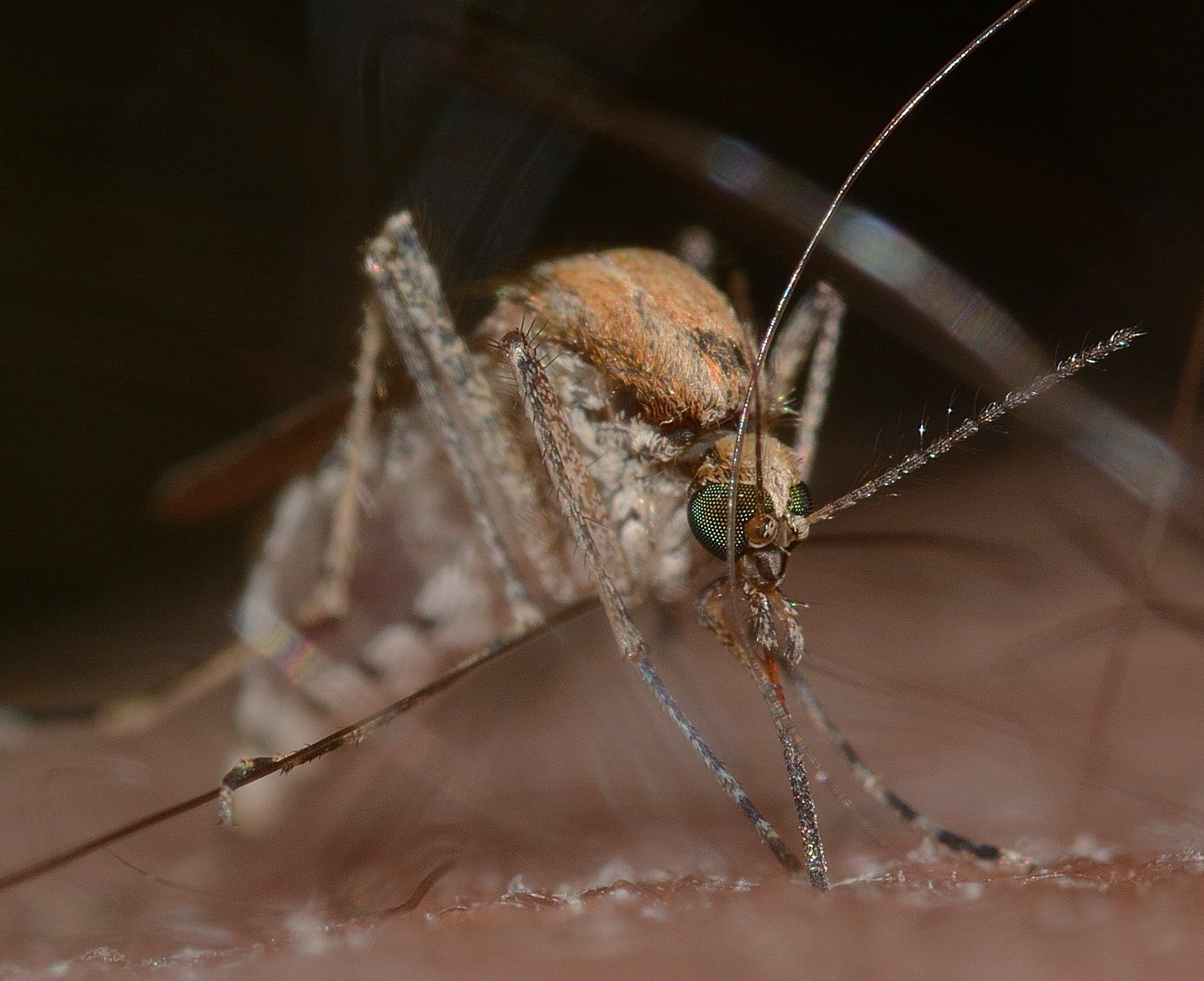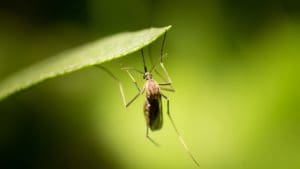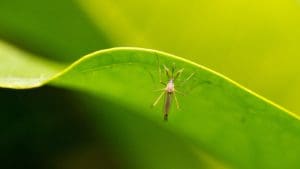


Don’t mosquitoes just seem to have a way of ruining outdoor fun? Prevention is key when it comes to mosquitoes, so to help make your backyard the outdoor paradise it should be, we put together this all-inclusive guide to preventing mosquito infestations.
Preventing mosquitoes is a whole lot easier when you understand their breeding cycle. In our previous article, we mentioned that 3 out of 4 of a mosquito’s life stages are spent in water. Let’s take a closer look at the stages of a mosquito’s life and why water is so important to each:
Egg
Mosquito eggs are very small and are laid singly or in clusters. The clusters, called rafts, are tightly packed together and consist of hundreds of eggs. A raft of 200-300 eggs is roughly ¼ inch long. When mosquito eggs are laid singly, they will sometimes drift together to form what is called a float. A float looks like a loose mat made up of any number of eggs. Single mosquito eggs are so small that they are almost impossible to see with the naked eye.
Mosquito eggs will not hatch without water, so they are either laid on the surface of standing water or in damp soil that will be flooded. The time it takes for a mosquito egg to hatch varies based on species, water availability, and temperature. They will typically hatch within 24 to 48 hours of being laid. That being said, eggs can survive several months before hatching if conditions are not suitable.
Larva
Mosquito eggs hatch into larvae, which are also called “wrigglers.” Larvae are less than ¼ inch long and look like tiny, hairy worms. They have hard, round heads and soft, segmented bodies. Wrigglers feed on the microorganisms in the water around them. Most species go to the water’s surface to breathe air, and all species remain in water throughout this stage of life. Larvae will molt several times before becoming pupae. Depending on species and environmental conditions, this stage will take between 4 and 14 days.
Pupa
When they are finished molting, mosquito larvae become pupae. Mosquito pupae are also known as “tumblers.” Like the larval stage, the pupal stage occurs entirely in the water. Tumblers no longer eat. They will remain in this stage for 2-7 days, after which a final molt will occur.
Adult
Once mosquito pupae have molted into adults, they are ready to leave the water. They fly away in search of a meal- males look for plant nectar while females search for a blood meal. Only female mosquitoes drink blood. They do so because blood contains the proteins and amino acids they require for egg laying. After mating with a male only once, a female mosquito can lay up to 200 eggs every three nights. They usually lay up to three groups of eggs before dying. Females will only mate once during their lives, and males will mate many times before their death.
A mosquito’s entire life cycle generally takes about 2 weeks to complete. The time frame can vary greatly based on a number of factors, though, so the cycle can really take anywhere from 4 days to one month.


Mosquitoes love hot, humid habitats. Most commonly, they infest wetlands like swamps and ponds. In reality, though, they can and will infest any area that provides shelter, food, and stagnant water. Some of the more common sources of standing water around human living spaces are birdbaths, buckets, ditches, puddles, empty planters, plant trays or saucers, tarps, pool covers, wading pools, ornamental pools, and even bottle caps. The more sources of standing water there are in one area, the higher the likelihood of an infestation occurring.
During the hottest points of the day, mosquitoes like to rest in protected areas. Some such areas include bushes, brush, caves, trees, hollow logs, holes in trees, and holes in the ground. If they enter a home or business, they will rest in areas like closets, basements, and underneath sinks.
Mosquitoes are a major nuisance and can be dangerous due to the diseases they carry. Prevention is the first step in avoiding infestations. Here is everything you need to know to prevent an infestation in your yard:
Remove Sources of Standing Water
Start by completely removing any unnecessary containers from your yard. Unused buckets and planters, bottle caps, and other such items should be disposed of or moved to a spot where they will not collect rainwater. Fill holes in the ground with dirt. When they are not in use, items like wheelbarrows and wading pools should either be kept in a sheltered area or turned upside down. Shake out tarps regularly to get rid of any water that may have collected on them. Outdoor garbage and recycling containers should have drainage holes in the bottoms. Garbage cans should have tight-fitting lids, as well. Have all gutters cleaned yearly, especially if they are prone to getting clogged.
If you keep your potted plants on trays or saucers, dump out any water that collects in them on a regular basis. Empty bird baths each night and refill them in the morning. Most birds looking for a bath are going to sleep in the evening, while mosquitoes are emerging to lay eggs. Plus, birds love getting clean, fresh water each day. Aerate ornamental pools or stock them with fish. This will discourage mosquitoes from laying eggs in them. Clean and chlorinate swimming pools regularly, and do not let water collect on pool covers.
Remove Rest Areas
Remove as many sheltered areas as possible. As previously mentioned, holes in the ground should be filled with dirt because if they don’t fill with water, mosquitoes will rest in them. Trim hedges and bushes regularly- do not let them become overgrown. Try to keep trees trimmed back as well to allow more sunlight to access your yard. Keep gardens as debris- and weed-free as possible. Remove any debris piles from your yard. Be sure there are tight seals around all doors and windows. This goes for sheds as well. Wherever possible, place screens on the windows and doors.
Repel Mosquitoes with Landscaping Techniques
Mosquitoes are not strong fliers and get blown around by the wind very easily. As such, they avoid areas in which they have trouble flying. Remove enough wind obstructions to allow a breeze to pass through your yard. Some obstructions include tall hedges, thick foliage, fences, and buildings.
Fortunately for us, there are a number of plants that mosquitoes hate. Filling your gardens or landscaping your yard with these plants will repel mosquitoes naturally. Some of the most effective mosquito-repelling plants are citronella, alliums, lavender, peppermint, marigold, mums, basil, floss, and rosemary. Consider using cedar mulch as well, as mosquitoes are repulsed by its smell.
Help Mosquitoes’ Predators
There are a number of species that feed on mosquitoes, and encouraging their presence in your yard will help reduce mosquito populations. Hang bat houses and birdhouses. Hang multiple types of birdhouses to attract different species. Make sure you are attracting mosquito-eating birds, though- it is commonly thought that Purple Martins eat thousands of mosquitoes when in reality they do not eat any.
Spiders eat mosquitoes, so if you find a web outdoors it is best to leave it alone. Dragonflies are especially prolific mosquito hunters. Set up a dragonfly garden with flat rocks and plants like black-eyed Susans and swamp milkweed.


Mosquito bites are seriously annoying, but they can also be dangerous. They can get infected and they are how mosquitoes spread disease. Prevent them by taking certain precautions while outdoors. Use mosquito repellent and burn citronella candles or tiki torches. Use a fire pit if one is available- mosquitoes avoid smoke. Be sure any baby carriers, playpens, or beds are completely covered with netting or mesh. If you are in an infested area, wear long pants, a long sleeve shirt, and close-toed shoes.
If your yard is infested with mosquitoes, give Twin-boro a call and we’ll send a technician your way. Our outdoor service plans take care of mosquitoes, ticks, and fleas, so you can enjoy your yard knowing your family and customers are safe from outdoor pests.